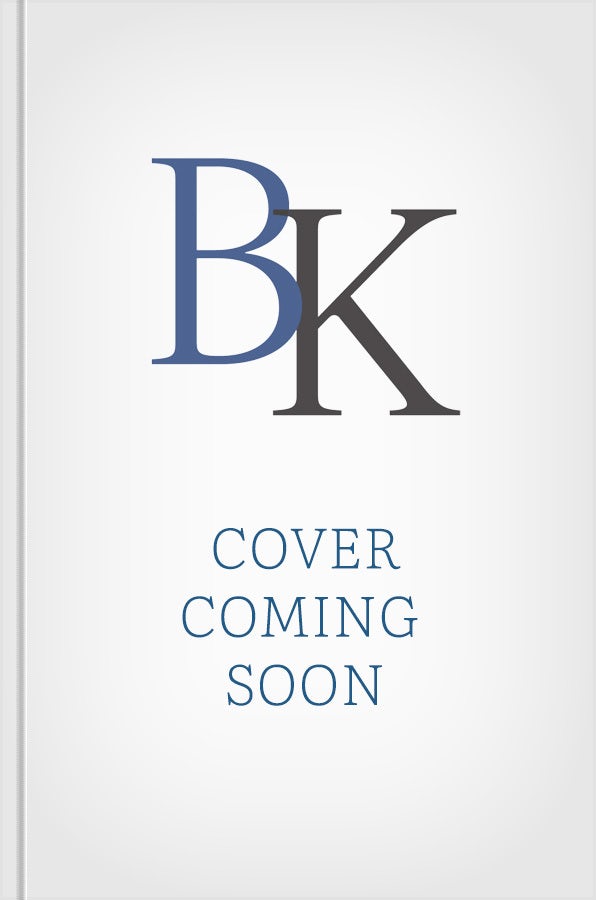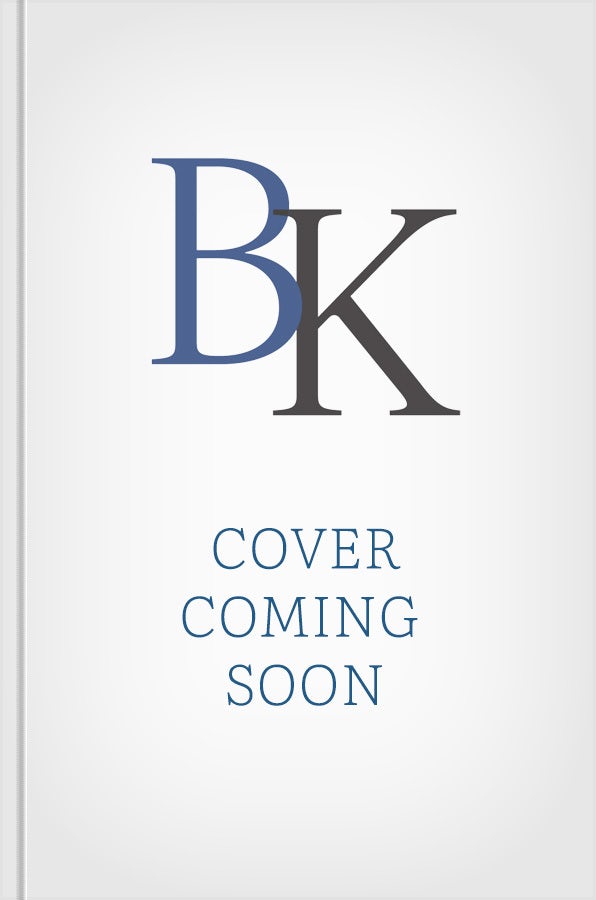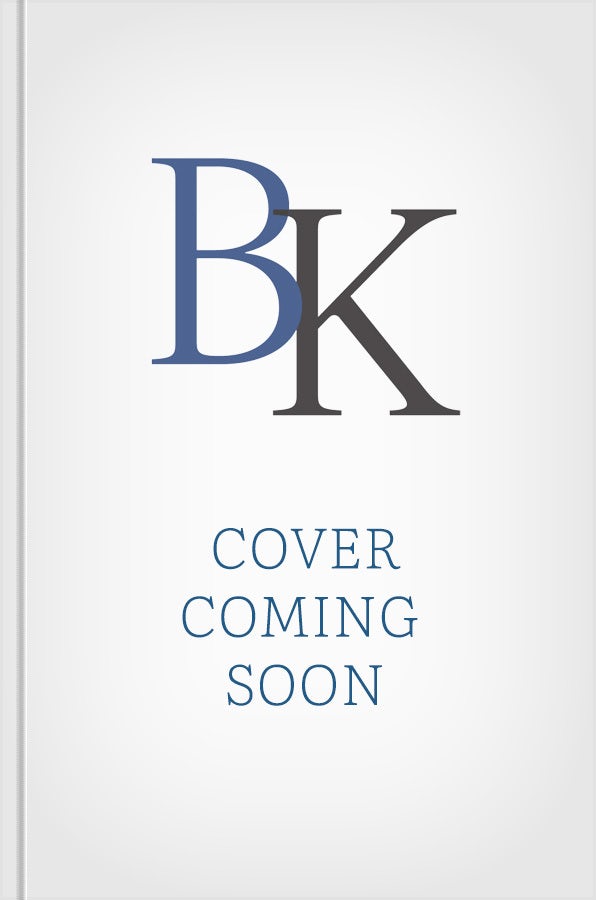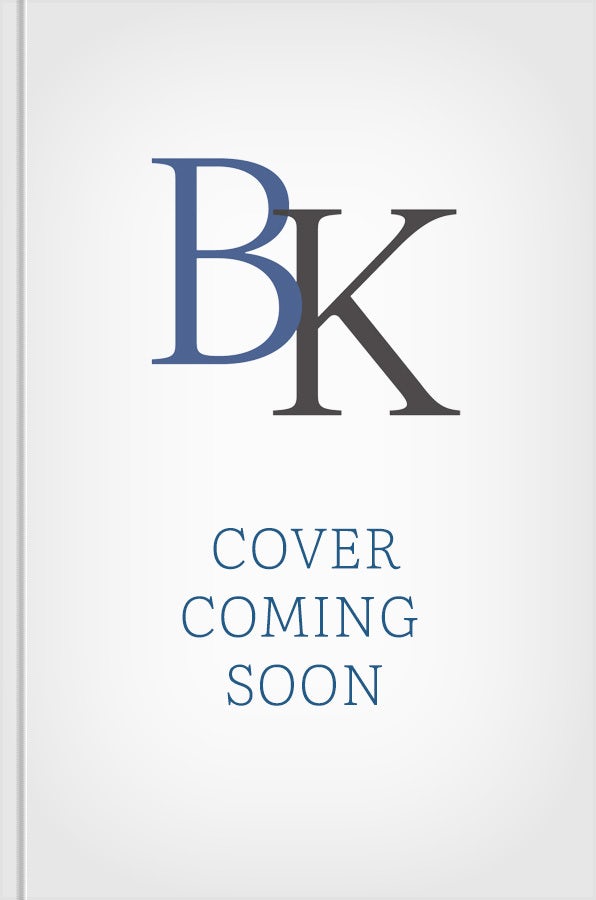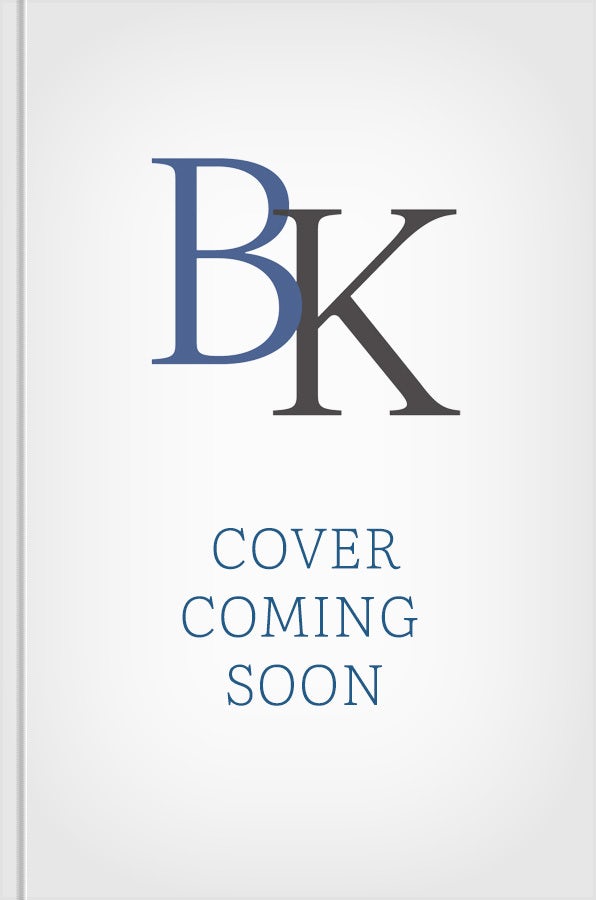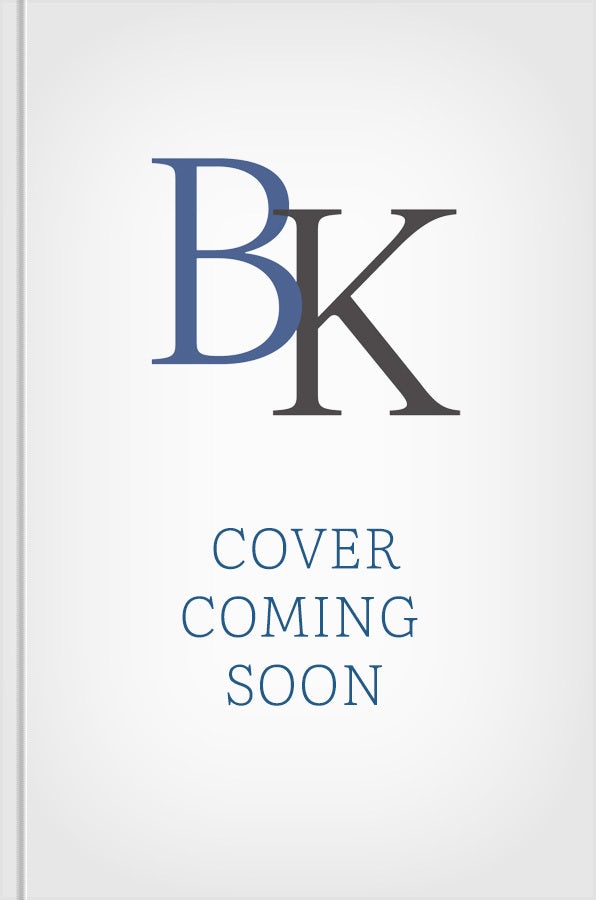Sort by:
This book is the first practical, hands-on guide that shows how leaders can build psychological safety in their organizations, creating an environment where employees feel included, fully engaged, and encouraged to contribute their best efforts and ideas.
Fear has a profoundly negative impact on engagement, learning efficacy, productivity, and innovation, but until now there has been a lack of practical information on how to make employees feel safe about speaking up and contributing. Timothy Clark, a social scientist and an organizational consultant, provides a framework to move people through successive stages of psychological safety. The first stage is member safety-the team accepts you and grants you shared identity. Learner safety, the second stage, indicates that you feel safe to ask questions, experiment, and even make mistakes. Next is the third stage of contributor safety, where you feel comfortable participating as an active and full-fledged member of the team. Finally, the fourth stage of challenger safety allows you to take on the status quo without repercussion, reprisal, or the risk of tarnishing your personal standing and reputation. This is a blueprint for how any leader can build positive, supportive, and encouraging cultures in any setting.
Fear has a profoundly negative impact on engagement, learning efficacy, productivity, and innovation, but until now there has been a lack of practical information on how to make employees feel safe about speaking up and contributing. Timothy Clark, a social scientist and an organizational consultant, provides a framework to move people through successive stages of psychological safety. The first stage is member safety-the team accepts you and grants you shared identity. Learner safety, the second stage, indicates that you feel safe to ask questions, experiment, and even make mistakes. Next is the third stage of contributor safety, where you feel comfortable participating as an active and full-fledged member of the team. Finally, the fourth stage of challenger safety allows you to take on the status quo without repercussion, reprisal, or the risk of tarnishing your personal standing and reputation. This is a blueprint for how any leader can build positive, supportive, and encouraging cultures in any setting.
"What is impressive is not only how Winters builds a case for the urgency and need for bold, inclusive conversations but that she also gives specific strategies and competencies to turn her theory into practice.”
-Dr. Sheila Robinson, publisher and CEO, Diversity Woman Media
Effective dialogue across different dimensions of diversity, such as race, gender, age, religion, or sexual orientation, fosters a sense of belonging and inclusion, which in turn leads to greater productivity, performance, and innovation. Whether in the workplace, faith communities, or educational settings, our differences can tear us apart rather than bring us together if we do not know how to communicate. Recognizing our collective responsibility to earnestly address our differences and increase understanding and empathy will not only enhance organizational goals but will also lead to a healthier, kinder, and more compassionate world.
Award-winning diversity, equity, and inclusion consultant Mary-Frances Winters has been leading workshops on what she calls Bold, Inclusive Conversations for years. In this book she offers specific dialogue strategies to foster greater understanding on the following topics:
• Recognizing the importance of creating equity and sharing power
• Dealing with the "fragility" of dominant groups--their discomfort in engaging with historically subordinated groups
• Addressing the exhaustion historically marginalized groups feel from constantly explaining their different lived experience
• Exploring how to build trust and create psychologically safe spaces for dialogue
This guide is comprehensive for anyone who wants to break down the barriers that separate us and facilitate discussions on potentially polarizing topics.
-Dr. Sheila Robinson, publisher and CEO, Diversity Woman Media
Effective dialogue across different dimensions of diversity, such as race, gender, age, religion, or sexual orientation, fosters a sense of belonging and inclusion, which in turn leads to greater productivity, performance, and innovation. Whether in the workplace, faith communities, or educational settings, our differences can tear us apart rather than bring us together if we do not know how to communicate. Recognizing our collective responsibility to earnestly address our differences and increase understanding and empathy will not only enhance organizational goals but will also lead to a healthier, kinder, and more compassionate world.
Award-winning diversity, equity, and inclusion consultant Mary-Frances Winters has been leading workshops on what she calls Bold, Inclusive Conversations for years. In this book she offers specific dialogue strategies to foster greater understanding on the following topics:
• Recognizing the importance of creating equity and sharing power
• Dealing with the "fragility" of dominant groups--their discomfort in engaging with historically subordinated groups
• Addressing the exhaustion historically marginalized groups feel from constantly explaining their different lived experience
• Exploring how to build trust and create psychologically safe spaces for dialogue
This guide is comprehensive for anyone who wants to break down the barriers that separate us and facilitate discussions on potentially polarizing topics.
A slew of harmful stereotypes continues to follow Black women. The second edition of this bestseller debunks vicious misconceptions rooted in long-standing racism and shows that Black women are still alright.
When African women arrived on American shores, the three-headed hydra-servile Mammy, angry Sapphire, and lascivious Jezebel-followed close behind. These stereotypes persist to this day through newspaper headlines, Sunday sermons, social media memes, cable punditry, government policies, and hit song lyrics. Emancipation may have happened more than 150 years ago, but America still won't let a sister be free from this coven of caricatures.
In this bestseller, Tamara Winfrey-Harris delves into marriage, motherhood, health, sexuality, beauty, and more, taking sharp aim at pervasive stereotypes about Black women. The new edition includes an updated foreword, revitalized statistics, and a new chapter on current Black women in leadership and power who are expected to save and mother America while laboring to get other people elected-like Kamala Harris, Stacey Abrams, and other industry leaders in media and the corporate world. Harris also brings in more real-world examples from meda, covering issues like blackfishing and digital blackface (which help white women rise to fame) and media fascination with black women's sexuality (as with Cardi B or Megan Thee Stallion).
Winfrey-Harris exposes anti-Black-woman propaganda and shows how real Black women are pushing back against racist, distorted cartoon versions of themselves. She counters warped prejudices with the straight-up truth about being a Black woman in America.
When African women arrived on American shores, the three-headed hydra-servile Mammy, angry Sapphire, and lascivious Jezebel-followed close behind. These stereotypes persist to this day through newspaper headlines, Sunday sermons, social media memes, cable punditry, government policies, and hit song lyrics. Emancipation may have happened more than 150 years ago, but America still won't let a sister be free from this coven of caricatures.
In this bestseller, Tamara Winfrey-Harris delves into marriage, motherhood, health, sexuality, beauty, and more, taking sharp aim at pervasive stereotypes about Black women. The new edition includes an updated foreword, revitalized statistics, and a new chapter on current Black women in leadership and power who are expected to save and mother America while laboring to get other people elected-like Kamala Harris, Stacey Abrams, and other industry leaders in media and the corporate world. Harris also brings in more real-world examples from meda, covering issues like blackfishing and digital blackface (which help white women rise to fame) and media fascination with black women's sexuality (as with Cardi B or Megan Thee Stallion).
Winfrey-Harris exposes anti-Black-woman propaganda and shows how real Black women are pushing back against racist, distorted cartoon versions of themselves. She counters warped prejudices with the straight-up truth about being a Black woman in America.
This book offers five proven principles so multinational companies can advance diversity, equity, and inclusion with a nuanced understanding of local contexts across countries and cultures.
DEI cannot be addressed globally through a single-culture worldview. The specifics of a successful DEI change effort in the United States may be irrelevant in another country. Succeeding locally – understanding the market and acknowledging local beliefs, regulations, and customs – is essential to succeeding globally. Thus, the question is, How do companies find the right balance between anchoring their efforts in the local context while pushing for change that may disrupt some of the cultural norms?
This book offers five overarching principles for transforming cultures to be inclusive globally:
1. Make it local.
2. Leaders change to lead change.
3. And it's good business too.
4. Go deep, wide, and inside out.
5. Know what matters, and count it.
These principles arise from Rohini Anand's own journey, as well as examples of more than thirty leaders from a variety of industries. Despite the urgency of the topic, little has been written on how to take cultural nuances into account while promoting social justice. This book makes a powerful contribution.
DEI cannot be addressed globally through a single-culture worldview. The specifics of a successful DEI change effort in the United States may be irrelevant in another country. Succeeding locally – understanding the market and acknowledging local beliefs, regulations, and customs – is essential to succeeding globally. Thus, the question is, How do companies find the right balance between anchoring their efforts in the local context while pushing for change that may disrupt some of the cultural norms?
This book offers five overarching principles for transforming cultures to be inclusive globally:
1. Make it local.
2. Leaders change to lead change.
3. And it's good business too.
4. Go deep, wide, and inside out.
5. Know what matters, and count it.
These principles arise from Rohini Anand's own journey, as well as examples of more than thirty leaders from a variety of industries. Despite the urgency of the topic, little has been written on how to take cultural nuances into account while promoting social justice. This book makes a powerful contribution.
This is the first book to define and explore Black fatigue, the intergenerational impact of systemic racism on the physical and psychological health of Black people-and explain why and how society needs to collectively do more to combat its pernicious effects.
“Living while black” is a new and viral term that catalogues the many unjust experiences and inequities that define what it means to be black. Having to constantly deal with these experiences leads to what diversity and inclusion thought leader Mary-Frances Winters calls “black fatigue,” a particular form of extreme tiredness that continues to tear the nation apart. In this book she chronicles the fear, frustration, anguish, and anger that is a unique and normalized part of living while black and prevails intergenerationally.
In every aspect of life, from socioeconomics, education, and the workforce to criminal justice and health outcomes, the trajectory for black people is getting worse. Black folks are quite literally sick and tired of being sick and tired. This book will lead to more invigorating conversations around race and offers coping mechanisms and self-care advice that centers on the needs of black people to combat black fatigue.
“Living while black” is a new and viral term that catalogues the many unjust experiences and inequities that define what it means to be black. Having to constantly deal with these experiences leads to what diversity and inclusion thought leader Mary-Frances Winters calls “black fatigue,” a particular form of extreme tiredness that continues to tear the nation apart. In this book she chronicles the fear, frustration, anguish, and anger that is a unique and normalized part of living while black and prevails intergenerationally.
In every aspect of life, from socioeconomics, education, and the workforce to criminal justice and health outcomes, the trajectory for black people is getting worse. Black folks are quite literally sick and tired of being sick and tired. This book will lead to more invigorating conversations around race and offers coping mechanisms and self-care advice that centers on the needs of black people to combat black fatigue.
This is the first authoritative book on building employee resource groups (ERGs) to empower underrepresented employees and positively impact diversity, equity, and inclusion (DEI) efforts within organizations and in society at large.
Employee resource groups (ERGs) have been present for decades. Originating out of affirmative action policies, they have evolved into powerful sources of employee activity and engagement that organizations have leveraged to support business goals. But ERGs can help create a more inclusive and just world at the same time that they serve company interests.
The focus for this book is on both how to manage ERGs effectively and why organizations should pay close attention to these groups as a source for engagement, innovation, belonging, feedback, and direction on tough issues. Farzana Nayani provides foundational tools and frameworks for starting and supporting an ERG. She also offers guidance for how ERGs can create impact in diversity, equity and inclusion efforts and can motivate action toward a more equitable society overall.
This is not just a handbook or a reference guide. It also serves as a deeper call to action around how, with more effective ERGs, we can truly progress toward the DEI goals that we are all setting out to accomplish.
Employee resource groups (ERGs) have been present for decades. Originating out of affirmative action policies, they have evolved into powerful sources of employee activity and engagement that organizations have leveraged to support business goals. But ERGs can help create a more inclusive and just world at the same time that they serve company interests.
The focus for this book is on both how to manage ERGs effectively and why organizations should pay close attention to these groups as a source for engagement, innovation, belonging, feedback, and direction on tough issues. Farzana Nayani provides foundational tools and frameworks for starting and supporting an ERG. She also offers guidance for how ERGs can create impact in diversity, equity and inclusion efforts and can motivate action toward a more equitable society overall.
This is not just a handbook or a reference guide. It also serves as a deeper call to action around how, with more effective ERGs, we can truly progress toward the DEI goals that we are all setting out to accomplish.
A fast and engaging read, Equity helps leaders create more inclusive organizations using human-centered design and behavior change principles.
Even the most passionate advocates for diversity, equity, and inclusion have been known to treat equity as the middle child – the concept they skip over in order to get to the warm, fuzzy feelings of inclusion. But as Minal Bopaiah shows throughout this book, equity is critical if organizations really want to leverage differences for greater impact.
Equity probes the unconscious biases that blind us to seeing systems, making explicit what is often unseen. This slender book introduces us to leaders who have overcome the obstacles to equity and led transformative change. Managing partners at a consulting firm who learn to retell their story of success by crediting the system that supports them. News managers at NPR who discover how they can create systemic support for diversifying sources on the air. A philanthropic foundation that collaborates with grantees to better communicate the importance of equity in healthcare to policy-makers. And creative professionals who have begun weaving inclusion, diversity, equity, and accessibility into the content they create, thereby transforming how customers and audiences view the world.
Filled with humor, heart, and pragmatism, Equity is a guidebook for change, answering the question of “how?” that so many leaders are asking today.
Even the most passionate advocates for diversity, equity, and inclusion have been known to treat equity as the middle child – the concept they skip over in order to get to the warm, fuzzy feelings of inclusion. But as Minal Bopaiah shows throughout this book, equity is critical if organizations really want to leverage differences for greater impact.
Equity probes the unconscious biases that blind us to seeing systems, making explicit what is often unseen. This slender book introduces us to leaders who have overcome the obstacles to equity and led transformative change. Managing partners at a consulting firm who learn to retell their story of success by crediting the system that supports them. News managers at NPR who discover how they can create systemic support for diversifying sources on the air. A philanthropic foundation that collaborates with grantees to better communicate the importance of equity in healthcare to policy-makers. And creative professionals who have begun weaving inclusion, diversity, equity, and accessibility into the content they create, thereby transforming how customers and audiences view the world.
Filled with humor, heart, and pragmatism, Equity is a guidebook for change, answering the question of “how?” that so many leaders are asking today.
DEI isn't just a box to check.
After being in corporate America for nearly a decade as a triple minority who passes for a straight white woman, Dannie Lynn Fountain knows that corporations' modern plague is the story of its DEI duality. Time and time again, she has witnessed companies pretend to care about DEI for public relations fodder and then discriminate against employees or ignore their identities.
Dannie's solution to this problem? Rage against the system by refusing to accept mediocre-at-best action.
This story isn't just about how messed up corporate DEI currently is; it also takes a hard look at what is necessary to get diversity right in three parts:
● The context of corporate DEI
● Why the change in perspective
● What's not working and how to change
Ending Checkbox Diversity gives readers an understanding of exactly how corporate America is failing underrepresented identities and offers a plan for what to do next, with clear examples and metrics for evaluating DEI in their own careers and aligning themselves with companies that are actually doing the work.
After being in corporate America for nearly a decade as a triple minority who passes for a straight white woman, Dannie Lynn Fountain knows that corporations' modern plague is the story of its DEI duality. Time and time again, she has witnessed companies pretend to care about DEI for public relations fodder and then discriminate against employees or ignore their identities.
Dannie's solution to this problem? Rage against the system by refusing to accept mediocre-at-best action.
This story isn't just about how messed up corporate DEI currently is; it also takes a hard look at what is necessary to get diversity right in three parts:
● The context of corporate DEI
● Why the change in perspective
● What's not working and how to change
Ending Checkbox Diversity gives readers an understanding of exactly how corporate America is failing underrepresented identities and offers a plan for what to do next, with clear examples and metrics for evaluating DEI in their own careers and aligning themselves with companies that are actually doing the work.
It is time for an emotional reckoning on our path to racial healing, sustainable equity, and the future of DEI. Here's the tool to help us navigate it.
In this groundbreaking book, Esther Armah argues that the crucial missing piece to racial healing and sustainable equity is emotional justice-a new racial healing language to help us do our emotional work. This work is part of the emotional reckoning we must navigate if racial healing is to be more than a dream. We all-white, Black, Brown-have our emotional work that we need to do. But that work is not the same for all of us.
This emotional work means unlearning the language of whiteness, a narrative that centers white people, particularly white men, no matter the deadly cost and consequence to all women and to global Black and Brown people. That's why a new racial healing language is crucial.
Emotional Justice grapples with how a legacy of untreated trauma from oppressive systems has created and sustained dual deadly fictions: white superiority and Black inferiority that shape-and wound-all of us. These systems must be dismantled to build a future that serves justice to everyone, not just some of us. We are the dismantlers we have been waiting for, and emotional justice is the game changer for a just future that benefits all of us.
In this groundbreaking book, Esther Armah argues that the crucial missing piece to racial healing and sustainable equity is emotional justice-a new racial healing language to help us do our emotional work. This work is part of the emotional reckoning we must navigate if racial healing is to be more than a dream. We all-white, Black, Brown-have our emotional work that we need to do. But that work is not the same for all of us.
This emotional work means unlearning the language of whiteness, a narrative that centers white people, particularly white men, no matter the deadly cost and consequence to all women and to global Black and Brown people. That's why a new racial healing language is crucial.
Emotional Justice grapples with how a legacy of untreated trauma from oppressive systems has created and sustained dual deadly fictions: white superiority and Black inferiority that shape-and wound-all of us. These systems must be dismantled to build a future that serves justice to everyone, not just some of us. We are the dismantlers we have been waiting for, and emotional justice is the game changer for a just future that benefits all of us.
"La'Wana Harris has opened this coach's eyes to the power of coaching practices to create new paths for diversity and inclusion work-whether or not you are formally trained as a coach. Please read this book and help create workplaces with honest engagement and access for all."
-Marshall Goldsmith, Thinkers 50 #1 Executive Coach and two-time #1 Leadership Thinker in the world
The elephant in the room with diversity and inclusion work is that people with privilege must use their privilege to allow others equal access to power. This is often the reason diversity efforts can be stalled--we talk about the benefits, but we don't address the perception that in order for some to gain power, others will have to "lose." Everyone believes in diversity until they have to give something up. How do we talk people through this shift?
This book introduces a new coaching tool, called Inclusion Coaching™, based on cutting-edge research to create the best practices for building a sustainable and actionable culture of inclusion for all businesses and organizations. Harris offers timely solutions and resources to help readers move beyond intentions to actions and behaviors that confront various negative "isms" felt by many who feel that they aren't being supported in the workplace. This book advocates for an innovative coaching platform that takes professional coaching and frames it with an inclusion modality. A valuable addition to the coaching profession, Harris provides managers and diversity coaches with new models to empower employees and CEOs to "do" inclusion and address deep-rooted biases that are often invisible to us. These proven solutions will help empower and inspire any business leader or organization to leverage all its members' talents to drive change through individual and collective action.
-Marshall Goldsmith, Thinkers 50 #1 Executive Coach and two-time #1 Leadership Thinker in the world
The elephant in the room with diversity and inclusion work is that people with privilege must use their privilege to allow others equal access to power. This is often the reason diversity efforts can be stalled--we talk about the benefits, but we don't address the perception that in order for some to gain power, others will have to "lose." Everyone believes in diversity until they have to give something up. How do we talk people through this shift?
This book introduces a new coaching tool, called Inclusion Coaching™, based on cutting-edge research to create the best practices for building a sustainable and actionable culture of inclusion for all businesses and organizations. Harris offers timely solutions and resources to help readers move beyond intentions to actions and behaviors that confront various negative "isms" felt by many who feel that they aren't being supported in the workplace. This book advocates for an innovative coaching platform that takes professional coaching and frames it with an inclusion modality. A valuable addition to the coaching profession, Harris provides managers and diversity coaches with new models to empower employees and CEOs to "do" inclusion and address deep-rooted biases that are often invisible to us. These proven solutions will help empower and inspire any business leader or organization to leverage all its members' talents to drive change through individual and collective action.
Women are acculturated within systems that encourage them to sabotage one another; this book shows how they can break free of this cultural programming and use whatever privilege and power they have to raise each other up.
Feminists have been fighting for decades against the stereotypes that women are somehow hardwired to backstab, claiming that it is not true and seeking to create unity among women. Unfortunately, as we are learning, there is in fact a type of sabotage that falls along racial lines. Different from the stereotypical personal catfight, these divisions between white women, black women and other women of color are rooted in history and are more pervasive than we realize. It occurs when women of different identities unwittingly sabotage each other. This book teaches readers how to take an active approach to better understand ourselves, the biases we may be holding without realizing it, and lift up other women along the way. By pausing to reflect before acting, it is possible to make a different choice, interrupt our action, and take steps to improve our world rather than perpetuate injustices, knowingly and unknowingly. This new book frames sabotage as both a historical inheritance and contextualizes the current problem, providing practical solutions that women can start using in the workplace right away, regardless of their position.
Feminists have been fighting for decades against the stereotypes that women are somehow hardwired to backstab, claiming that it is not true and seeking to create unity among women. Unfortunately, as we are learning, there is in fact a type of sabotage that falls along racial lines. Different from the stereotypical personal catfight, these divisions between white women, black women and other women of color are rooted in history and are more pervasive than we realize. It occurs when women of different identities unwittingly sabotage each other. This book teaches readers how to take an active approach to better understand ourselves, the biases we may be holding without realizing it, and lift up other women along the way. By pausing to reflect before acting, it is possible to make a different choice, interrupt our action, and take steps to improve our world rather than perpetuate injustices, knowingly and unknowingly. This new book frames sabotage as both a historical inheritance and contextualizes the current problem, providing practical solutions that women can start using in the workplace right away, regardless of their position.
Change initiatives fail because humans are hardwired to return to what's worked for us in the past. This book offers a straightforward process for rewiring ourselves and those we lead to be more change-capable.
Erika Andersen says avoiding change is a biological imperative. Change initiatives often fail because leaders don't overcome individuals' instinctive impulse toward homeostasis – stable conditions needed for survival. Incorporating a fictional story of a jewelry business changing generational hands, Andersen lays out a five-step process for addressing both the human side of change and its practical aspects:
Step 1-Clarify the change and why it's needed: Get clear on what the change is and the benefits it will bring.
Step 2-Envision the future state: Build a shared picture of the post-change future.
Step 3-Build the change: Bring together a change team, engage key stakeholders, and plan the change.
Step 4-Lead the transition: Build a transition plan that supports the human side of the change, then engage the whole organization in making the change.
Step 5-Keep the change going: Work to make your organization permanently more change-capable.
With engaging opportunities to self-reflect and try out the ideas and approaches throughout, this book is a practical guide to thriving in this era of nonstop change.
Erika Andersen says avoiding change is a biological imperative. Change initiatives often fail because leaders don't overcome individuals' instinctive impulse toward homeostasis – stable conditions needed for survival. Incorporating a fictional story of a jewelry business changing generational hands, Andersen lays out a five-step process for addressing both the human side of change and its practical aspects:
Step 1-Clarify the change and why it's needed: Get clear on what the change is and the benefits it will bring.
Step 2-Envision the future state: Build a shared picture of the post-change future.
Step 3-Build the change: Bring together a change team, engage key stakeholders, and plan the change.
Step 4-Lead the transition: Build a transition plan that supports the human side of the change, then engage the whole organization in making the change.
Step 5-Keep the change going: Work to make your organization permanently more change-capable.
With engaging opportunities to self-reflect and try out the ideas and approaches throughout, this book is a practical guide to thriving in this era of nonstop change.










